Primary Source Set
University Student Activism
In the late 20th century, the United States Supreme Court ruled that students and teachers carry their First Amendment rights to freedom of speech and expression through the doors of their schools—education officials could not claim disturbance of the learning environment. This collection of resources includes newspaper articles, flyers, photographs, and videos to share how college students in North Carolina engaged in protest and activism in the late 1900s and into the early 2000s, both for themselves and for their communities.
Time Period
1950s-2000s
Grade Level
9 – 12
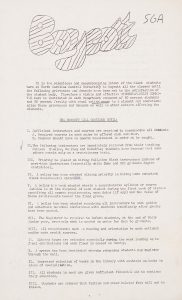
NCCU SGA Boycott Grievances and Demands - Page 1 (1961)
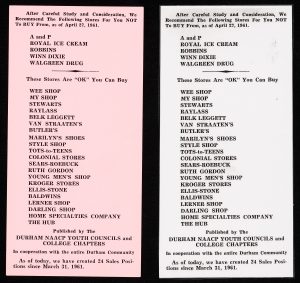
NCCU SGA Business Boycott Flyer (1961)
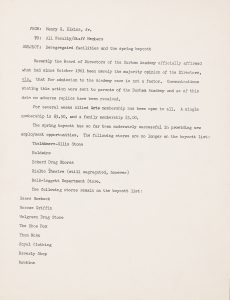
NCCU SGA Boycott Letter (1961)
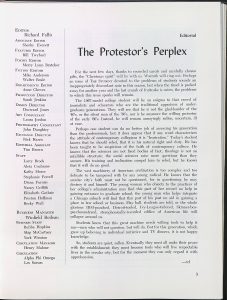
"The Protestor's Perplex" Editorial, The Student (1966)
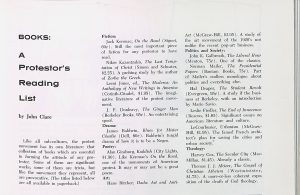
"Books: A Protestor's Reading List" Editorial, The Student (1966)
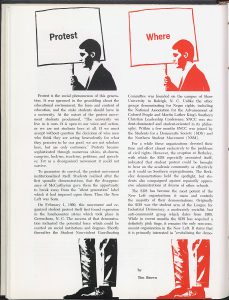
"Protest Where It's At," The Student (1966)

UNC-Chapel Hill Food Worker Strike Film (1969)
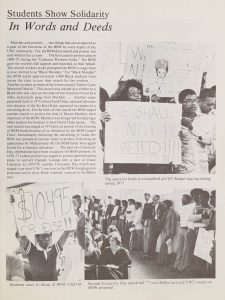
"Students Show Solidarity in Words and Deeds," Ebony Images (1978)
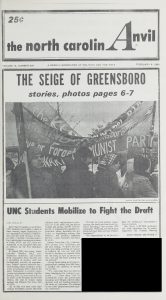
"Students Mobilize to Fight Draft," North Carolina Anvil (1980)
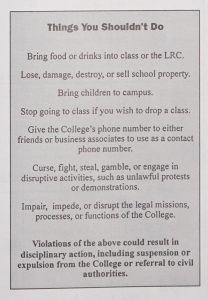
Roanoke-Chowan Community College Student Handbook (2001-02)
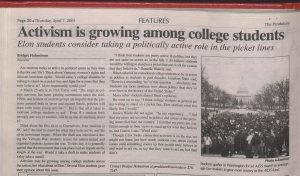
"Activism is growing among college students," The Pendulum (2005)
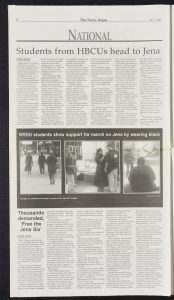
"Students from HBCUs head to Jena," The New Argus (2007)
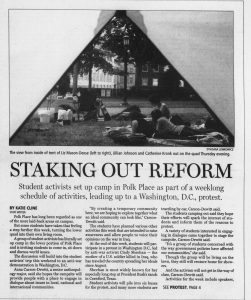
"Staking Out Reform," The Daily Tar Heel (2005)

"Olympics bring out activism in students," The Daily Tar Heel" (2008)
Background
The second half of the 20th century is known historically for numerous civil rights movements. Over the span of 50 years, this era saw activism around many issues including racial desegregation, reproductive rights, anti-war movements, education, and voting rights. The momentum of these movements encouraged community members of all ages and backgrounds to become vocal about local and national issues in pursuit of equality.
In both North Carolina and across the United States, students played unique and crucial roles in the civil rights movement as participants, organizers, and leaders alike. Just a few years after the landmark case of Brown v. Board of Education (1954), four North Carolina A&T students shifted the national conversation of desegregation to the lunch counter at a local business through the Greensboro Woolworth sit-in demonstrations. Nine years later, the Supreme Court decided in favor of students’ First Amendment right to maintain freedom of speech and demonstration within schools and education environments after nationwide pushback against students’ anti-war armbands. At each of these key moments, students’ rights, voices, and protests served as a point of progress in the civil rights movement.
Throughout the late 20th century and into the 21st century, complexities of civil rights and progress are continually vocalized by students through informal and formal means of communication and protest. This primary source set looks specifically at moments of protest and activism from university students in North Carolina, and the role in which this population engaged with the world around them.
Discussion Questions
How did university students participate in protest and activism in the late 20th and early 21st centuries?
What methods of activism did they use? Why do you think they chose that specific method?
Consider “The Protestor’s Perplex” in The Student from Wake Forest University. What are some of the perceptions of university student activists the author mentions? How are these perceptions impacting students’ views of themselves and their lives?
Often, universities and colleges provide guidelines and policies in an attempt to keep their students safe. Take a moment to imagine yourself in the position of a Roanoke-Chowan Community College student, and you heard about demonstrations similar to those at UNC-Chapel Hill in 2005. How would you feel about their handbook policies discouraging protest participation? Would you still participate? Why or why not?
Imagine you’re a university president in the late 20th century. What plans or policies would you propose in relation to students participating in protests on your campus?
Often, students engaged in activism around issues both on campus, as well as traveling around the country to lend their voices to nation-wide conversations. Information was shared in newspapers, via letters and flyers, and by gathering together in person. What does collective action look like today? How is it similar, and how has it changed?
This primary source set was compiled by Sarah Costello Dwyer.
Updated January 2025